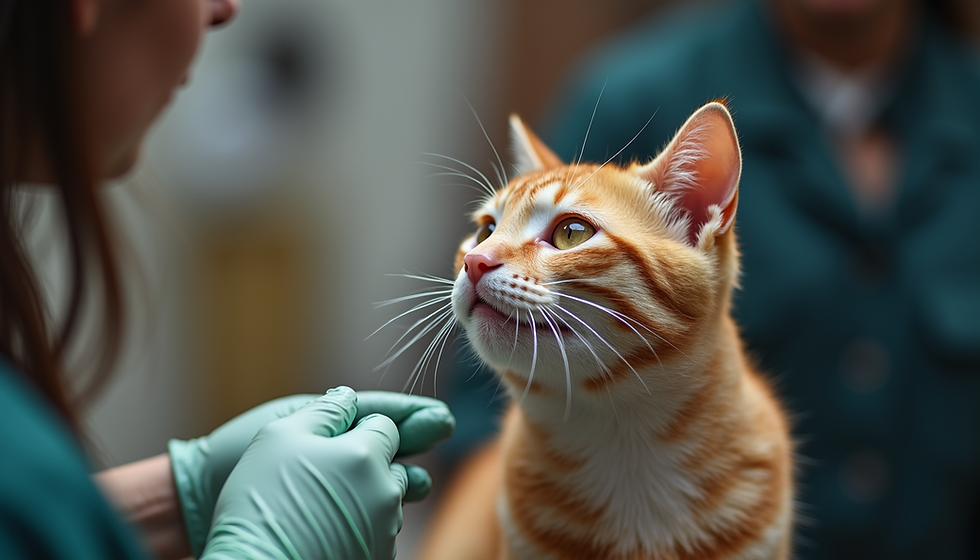The Ultimate Guide to Adopting a Rescue Cat: What to Expect and How to Prepare
- mskittyssanctuary
- Mar 12
- 3 min read
Updated: Apr 18

Adopting a rescue cat is a life-changing decision—not just for the cat, but for you as well! Bringing home a feline friend means providing love, patience, and care, but it also comes with adjustments and responsibilities. Whether you’re a first-time cat parent or adding another whiskered companion to your home, this guide will help you navigate the adoption process and prepare for a smooth transition.
Step 1: Choosing the Right Cat for You
Every cat has a unique personality, and finding the right fit for your lifestyle is key. Here are some things to consider:
Age: Kittens are playful but require more time and training, while adult cats are often more independent. Senior cats make wonderful, low-maintenance companions.
Personality: Some cats are social and outgoing, while others are shy and reserved. Talk to shelter staff to understand the cat’s temperament.
Activity Level: If you want an energetic playmate, a young and active cat might be best. If you prefer a laid-back companion, look for a calmer cat.
Special Needs: Consider adopting cats with medical conditions or disabilities—they need love too!
Step 2: Preparing Your Home
Before bringing your new cat home, make sure your space is safe and welcoming.
Essential Supplies:
✅ Litter box & litter – One per cat, plus one extra for multi-cat households.
✅ Food & water bowls – Stainless steel or ceramic is best.
✅ High-quality cat food – Ask the shelter what they’re currently eating to ease the transition.
✅ Scratching posts – To protect your furniture and fulfill their natural instincts.
✅ Cozy bed & hiding spots – Cats need places to feel secure.
✅ Toys & enrichment items – To keep them entertained and mentally stimulated.
✅ Cat carrier – A sturdy, secure carrier for vet visits and travel.
Cat-Proof Your Home:
🔹 Remove toxic plants (like lilies and poinsettias).
🔹 Secure loose wires and small objects that could be swallowed.
🔹 Store away harmful chemicals and cleaning supplies.
🔹 Close off any small spaces where a scared cat might hide and get stuck.
Step 3: Bringing Your Cat Home
Adoption day is exciting, but your cat will need time to adjust.
The First 24 Hours:
Set up a quiet room with their essentials so they have a safe space.
Keep interactions gentle and low-key—let them come to you.
Expect hiding, hesitation, and cautious exploration—it’s normal!
The First Few Weeks:
Establish a routine for feeding and playtime to build trust.
Slowly introduce them to other pets and family members.
Watch for any signs of illness or behavioral concerns and schedule a vet check-up.
Step 4: Building Trust & Bonding
Some rescue cats warm up quickly, while others take weeks or months to feel secure. Patience is key!
🐾 Use positive reinforcement – Reward good behavior with treats and praise.
🐾 Give them space – Let them initiate affection on their terms.
🐾 Engage in play – Interactive toys like feather wands can strengthen your bond.
🐾 Respect their boundaries – Avoid forcing interactions if they’re nervous.
Step 5: Veterinary Care & Long-Term Commitment
Your rescue cat should have a veterinary check-up soon after adoption. Discuss:
✔️ Vaccinations and preventative care.
✔️ Spaying or neutering (if not already done).
✔️ Diet recommendations for a healthy life.
Cats can live 15-20 years, so adopting is a long-term commitment. Providing a loving, stable home will ensure your rescue cat thrives for years to come!
Final Thoughts
Adopting a rescue cat is a rewarding experience that saves a life and fills your home with love. While the adjustment period takes time, patience, and understanding, the bond you form will be priceless.
Are you ready to adopt? Visit Ms. Kitty's Animal Sanctuary and meet your future feline companion today!




Comments